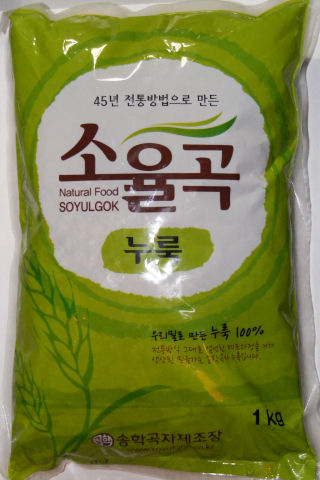Rottweiler22
New Member
My Grandma gave me this recipe from when she used to make wines. My Grandad really got a taste for the stuff when he was back in Korea 
--- INGREDIENTS ---
- 1.3kg (3lb) Long Grain Rice
- 1.3kg (3lb) Granulated Sugar (Sucrose)
- 3.4l (6pts) Lukewarm Water
- 450g (1lb) Raisins
- 1/2 cup Strong Cold Tea (Without milk)
- 1 Lemon
- Campden Tablets
- General Purpose Wine Yeast & Nutrient
--- METHOD ---
1) Put the raisins in a large Pyrex bowl & cover with boiling water. Leave overnight for the raisins to absorb the water.
2) The next day press the juice out of the raisins with a potato masher. Pour the juice through a sieve into a fermenting bucket. Add a crushed campden tablet.
3) Add the rice & sugar to the fermenter, as well as the juice of the lemon. Add the cold tea.
4) Pour on the 6 pints of water & stir well. Leave it overnight.
5) The next day add the yeast & nutrient. Stir it in really well. Cover the bucket (Or add an airlock) & leave for 3 days in a warm place, stirring daily.
6) After 3 days, leave the bucket covered for another 8. Don't stir anymore.
7) After 8 days, remove the scum from the top. Strain into a demijohn, & add airlock. Leave for around 2 - 3 weeks.
8) After 3 weeks, rack & bottle as you do. It takes a while to clear, but it turns out very nice & strong
--- INGREDIENTS ---
- 1.3kg (3lb) Long Grain Rice
- 1.3kg (3lb) Granulated Sugar (Sucrose)
- 3.4l (6pts) Lukewarm Water
- 450g (1lb) Raisins
- 1/2 cup Strong Cold Tea (Without milk)
- 1 Lemon
- Campden Tablets
- General Purpose Wine Yeast & Nutrient
--- METHOD ---
1) Put the raisins in a large Pyrex bowl & cover with boiling water. Leave overnight for the raisins to absorb the water.
2) The next day press the juice out of the raisins with a potato masher. Pour the juice through a sieve into a fermenting bucket. Add a crushed campden tablet.
3) Add the rice & sugar to the fermenter, as well as the juice of the lemon. Add the cold tea.
4) Pour on the 6 pints of water & stir well. Leave it overnight.
5) The next day add the yeast & nutrient. Stir it in really well. Cover the bucket (Or add an airlock) & leave for 3 days in a warm place, stirring daily.
6) After 3 days, leave the bucket covered for another 8. Don't stir anymore.
7) After 8 days, remove the scum from the top. Strain into a demijohn, & add airlock. Leave for around 2 - 3 weeks.
8) After 3 weeks, rack & bottle as you do. It takes a while to clear, but it turns out very nice & strong



































![BREWING THERMOMETER STICKERS ACCURATELY MONITOR FERMENTING BEER & WINE LIQUID TEMPERATURES 5PCS HOME BREW SPIRITS WINE LCD ADHESIVE [US]](https://m.media-amazon.com/images/I/311DDjo2X3L._SL500_.jpg)







